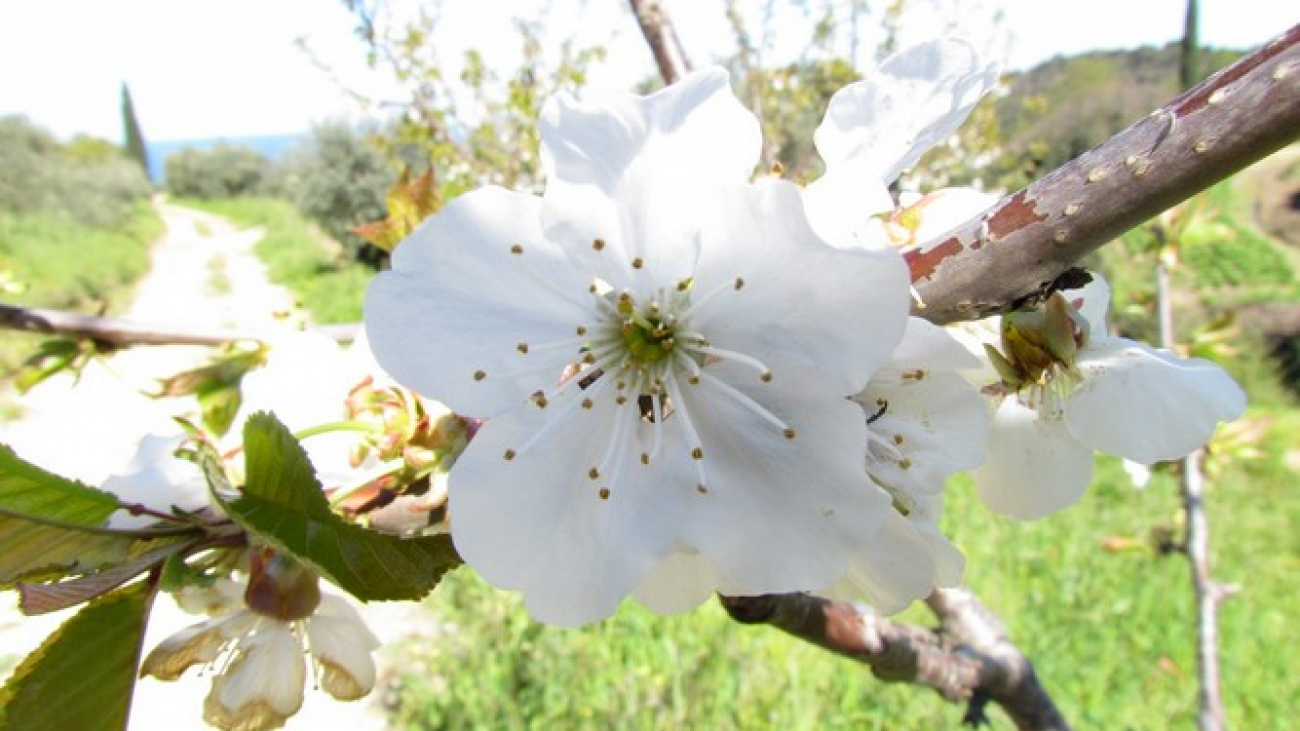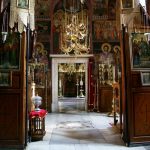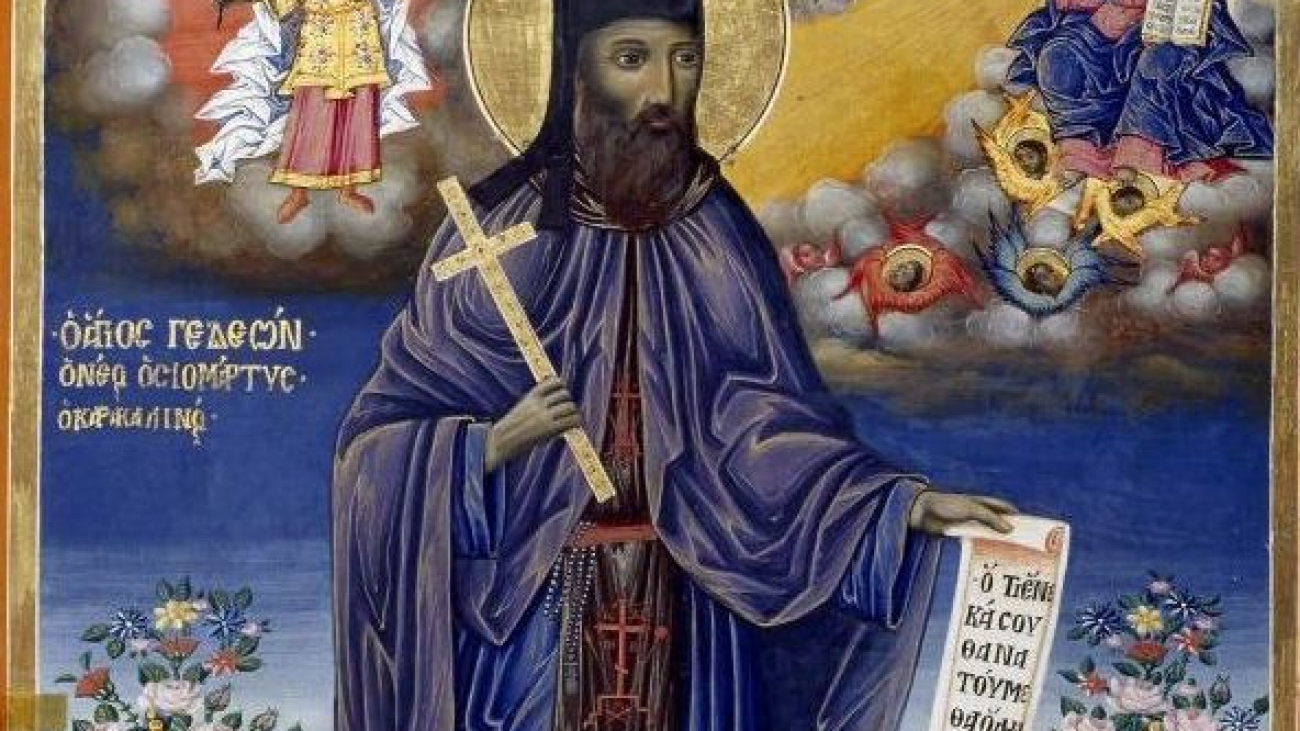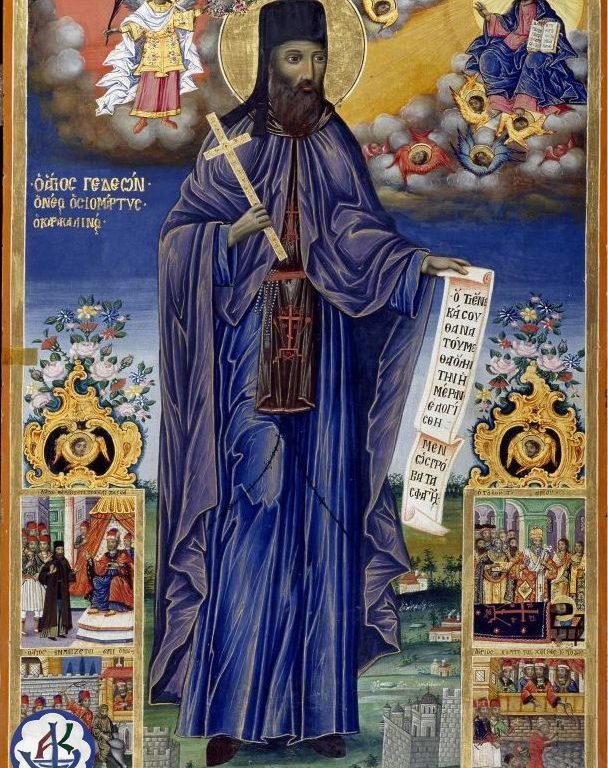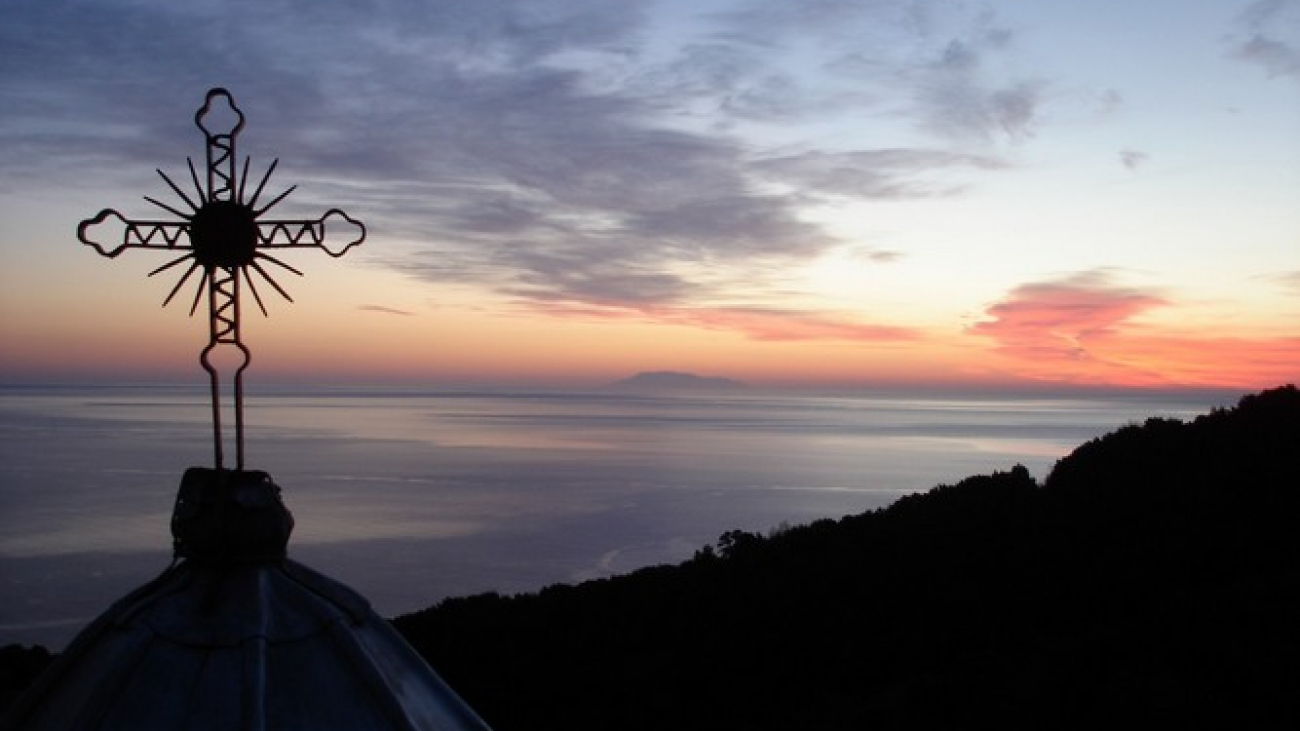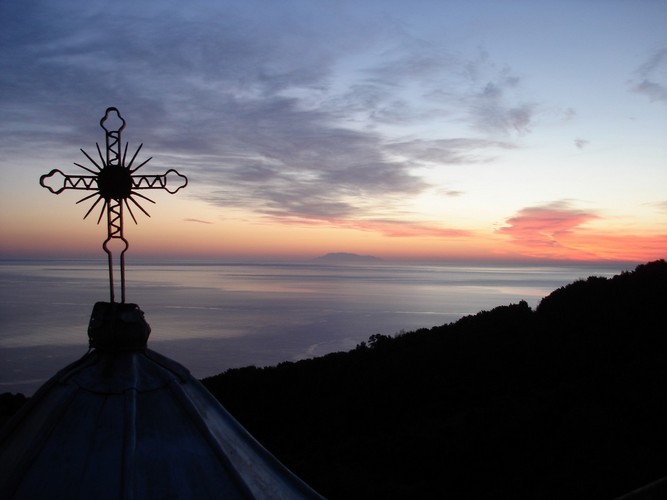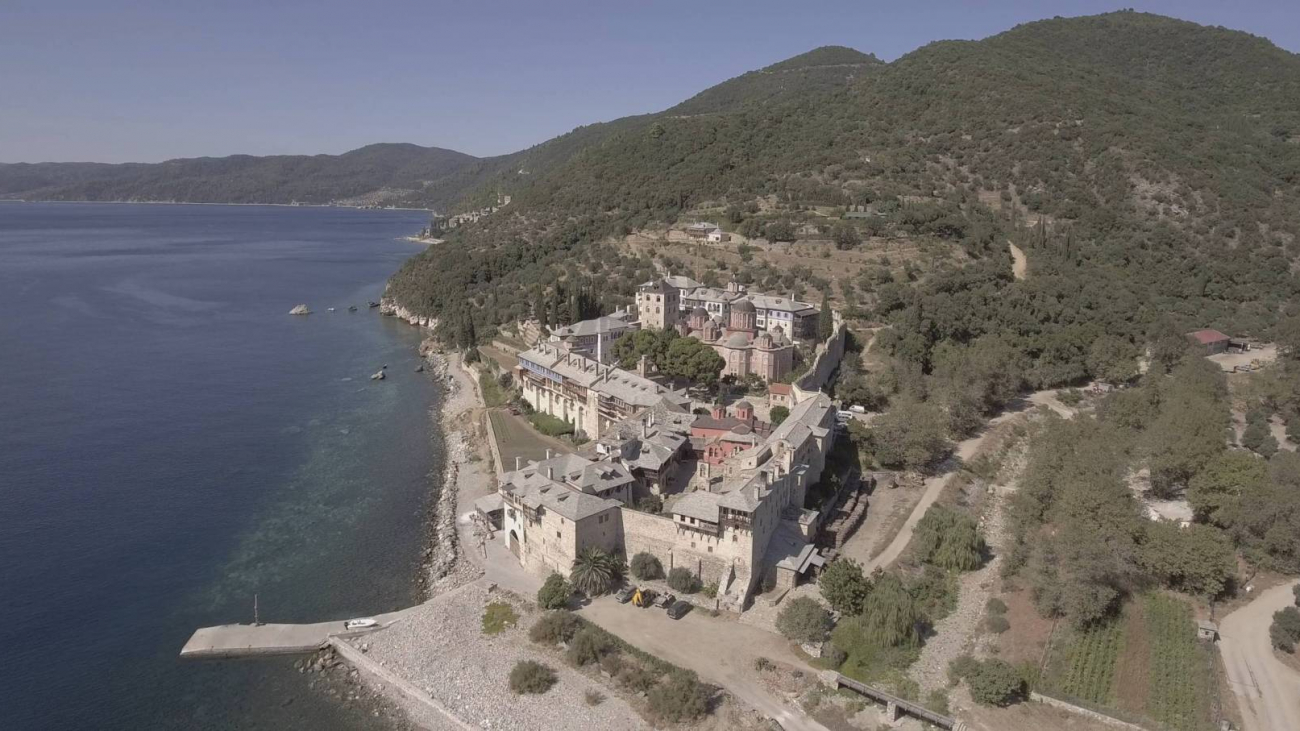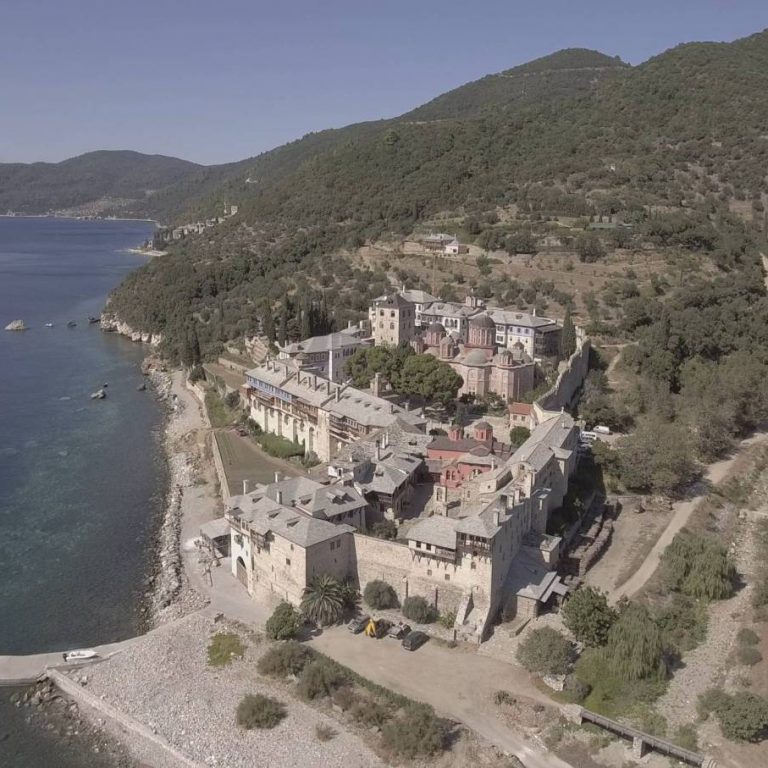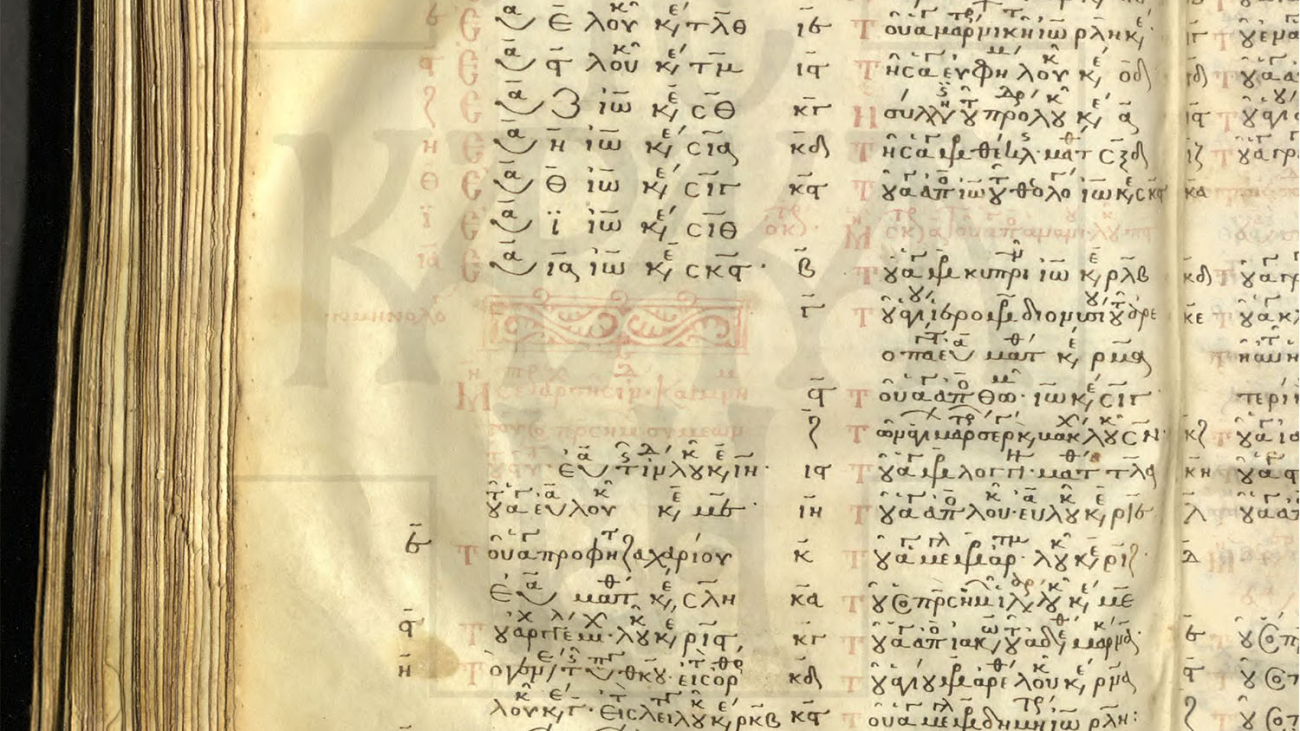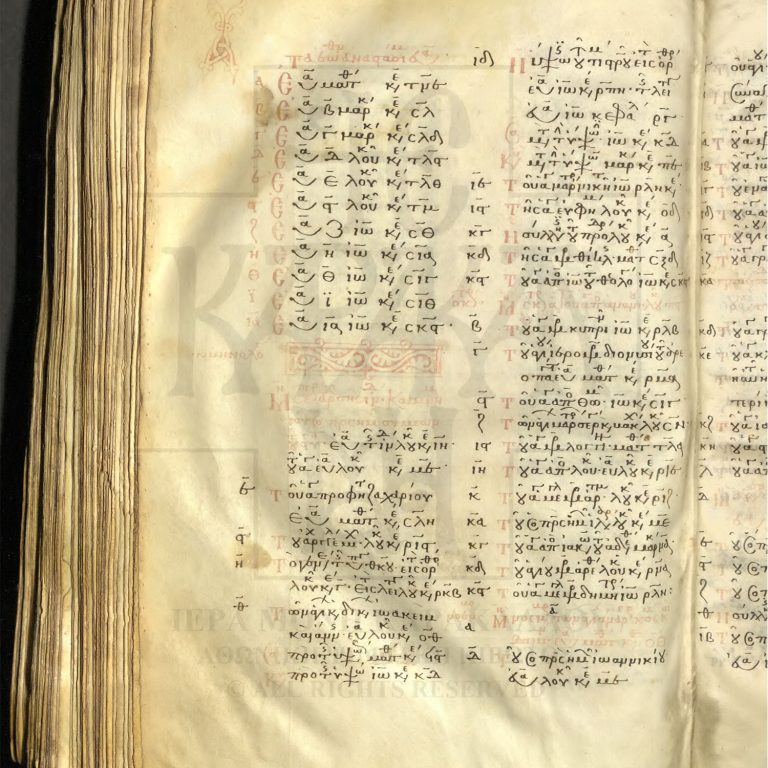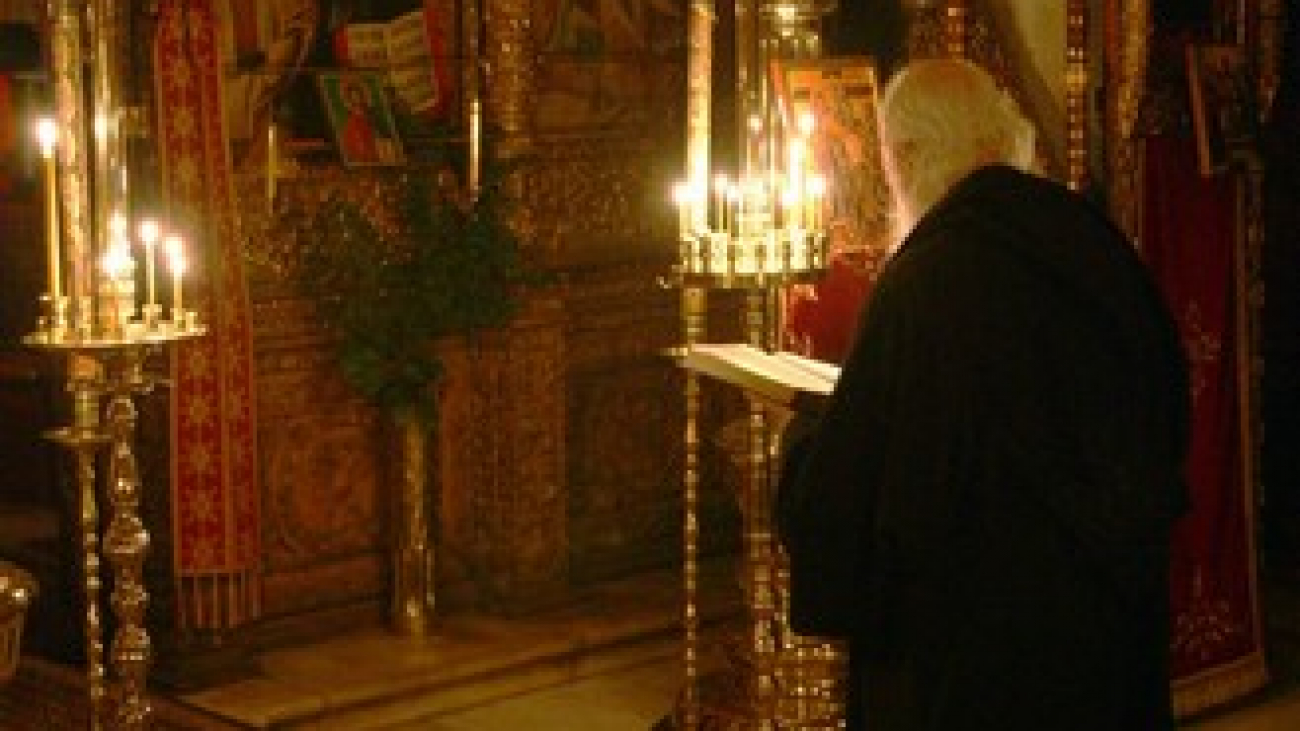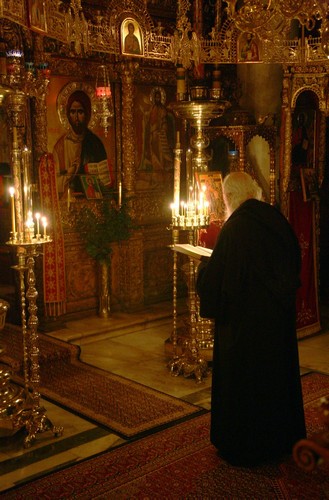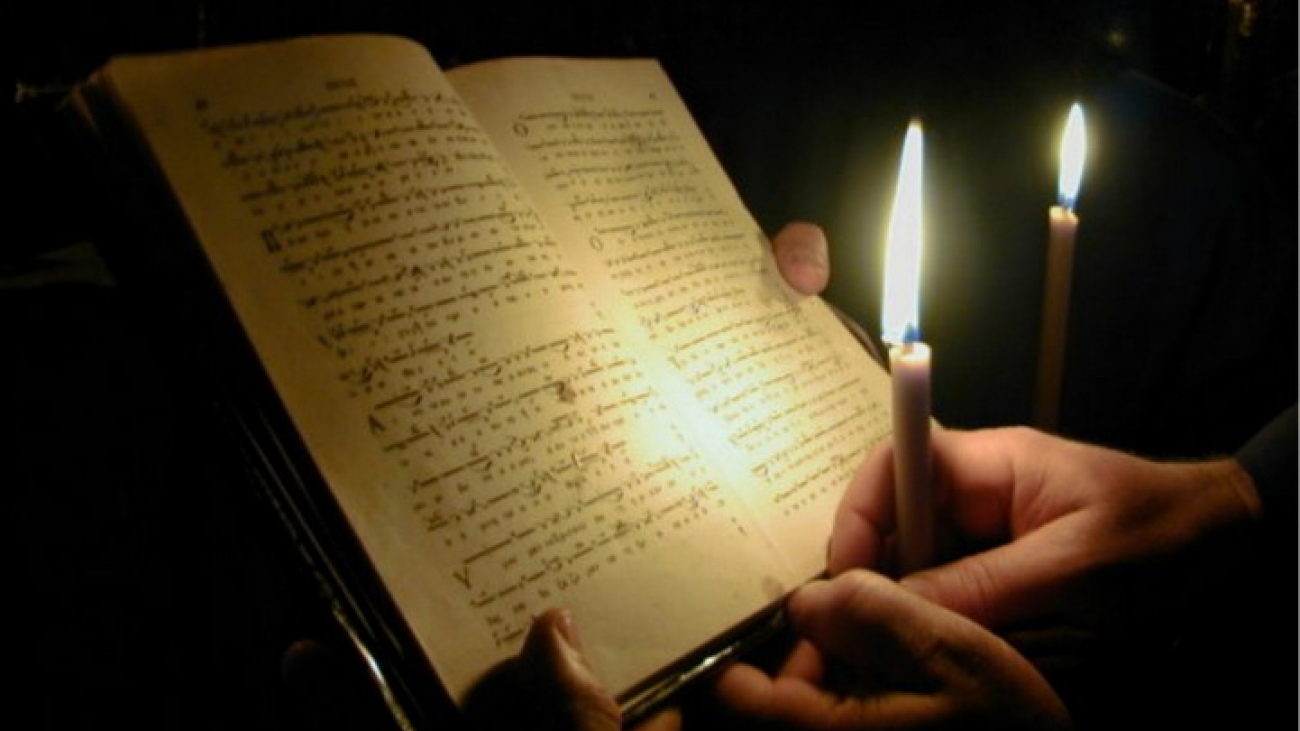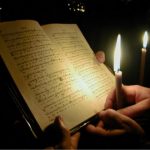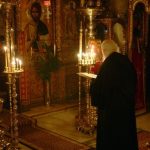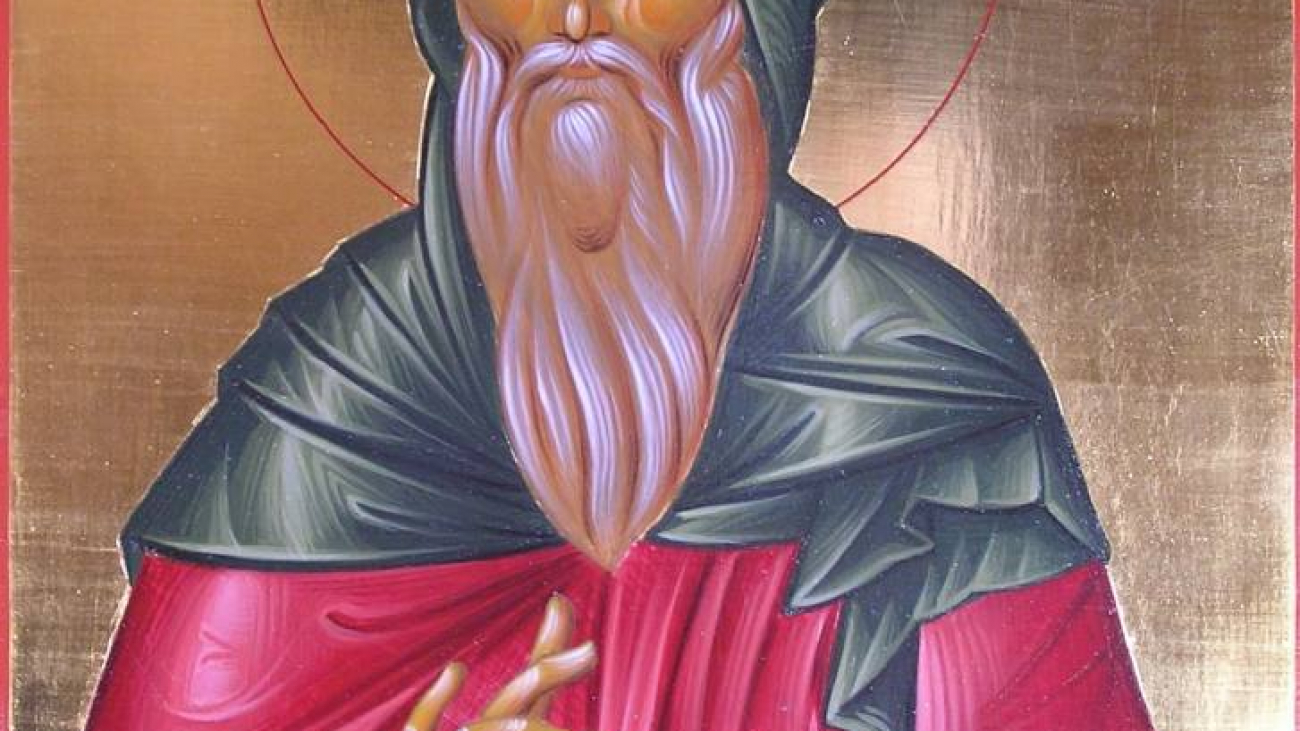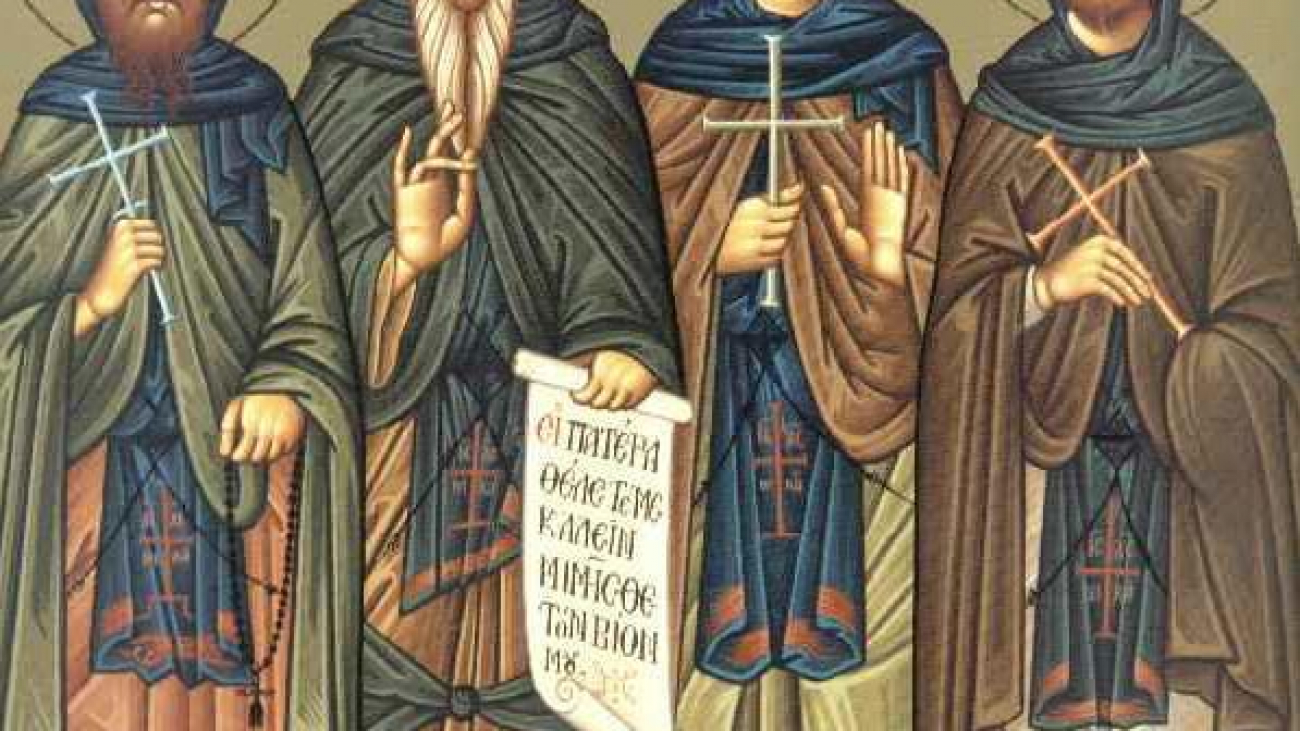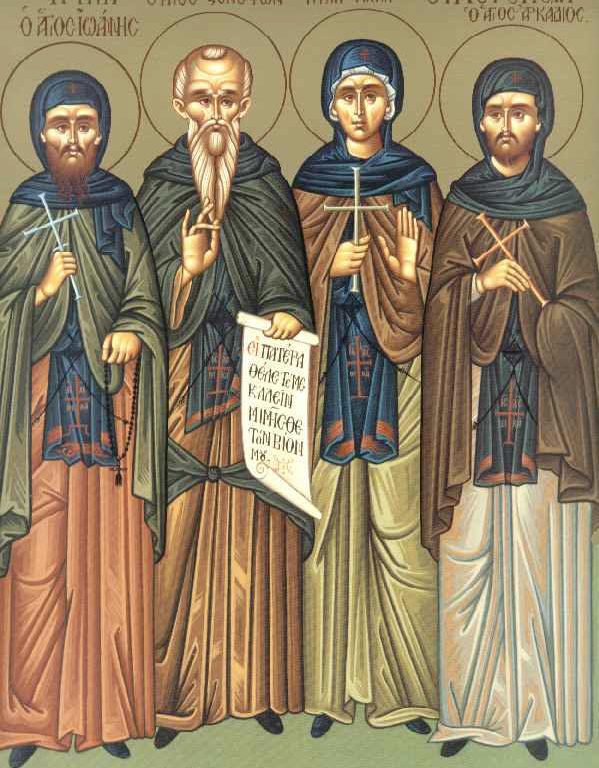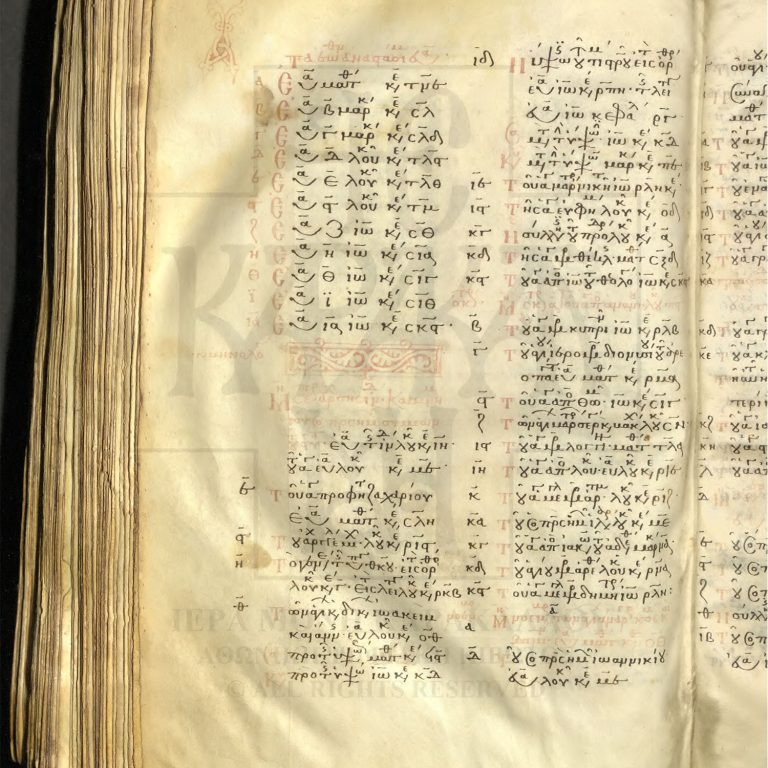A Wreath Of Flowers
After many years at the Monastery, he decided to seek martyrdom as atonement for his early denial of faith, and asked a blessing to leave the Monastery for this purpose. He went to Zagora and from there to Velestino, the place where he had denounced his faith. On Holy Thursday, wearing a wreath of flowers on his head, he went to the house of his former Ottoman employers, and began to pound on the door so fiercely that he almost broke it down. Upon learning Gedeon's identity, his old master reported the incident to the Ottoman authorities, and he was arrested. On the morning of Holy Friday, soldiers brought him in front of a judge. Gedeon gave two red-dyed eggs to the judge, and said 'Christ is risen, judge, so live long!'
The judge ordered Gedeon to be given something to drink; as soon as he had the cup in his hands, he threw it into the judge's face. Instead of ordering his execution, the judge simply had him thrown out of the court. Gedeon roamed through the town, and in front of the mosque, hit a woman so hard that her mouth bled. The townspeople beat him mercilessly and left him half-dead. The Christians took him to the house of his sister Daphne, in a village an hour's walk from Velestino.
For a while, he worked in the village of Kanalia helping the fishermen. He continued to create problems for the Ottomans in order to provoke their anger and to thus obtain martyrdom, but his efforts always failed. He returned to the Karakallos Monastery for a while, where he again assumed the duty of maintaining the church.
The judge ordered Gedeon to be given something to drink; as soon as he had the cup in his hands, he threw it into the judge's face. Instead of ordering his execution, the judge simply had him thrown out of the court. Gedeon roamed through the town, and in front of the mosque, hit a woman so hard that her mouth bled. The townspeople beat him mercilessly and left him half-dead. The Christians took him to the house of his sister Daphne, in a village an hour's walk from Velestino.
For a while, he worked in the village of Kanalia helping the fishermen. He continued to create problems for the Ottomans in order to provoke their anger and to thus obtain martyrdom, but his efforts always failed. He returned to the Karakallos Monastery for a while, where he again assumed the duty of maintaining the church.

